Razor-sharp teeth and poisonous venom may sound scary, but wildlife authorities have known for decades that some of the deadliest creatures in the United States are the innocent-looking ones you might least suspect.
This week, North Carolina officials warned locals to keep themselves and their pets safe from a deadly invasive species, originally native to South America, with a very mild-mannered name: the ‘Apple Snail.’
The snail joins the toxic, mucus-covered Hammerhead worm on the list of less-than-intimidating, but dangerous invasives that have spread across America over the course of the past year.
Not to be outdone, the US has many of its own homegrown, dangerous species and unexpected threats worth watching out for.
Below are five deceptively deadly animals across the country that could be in your backyard. Here’s how they kill and how you can protect yourself.
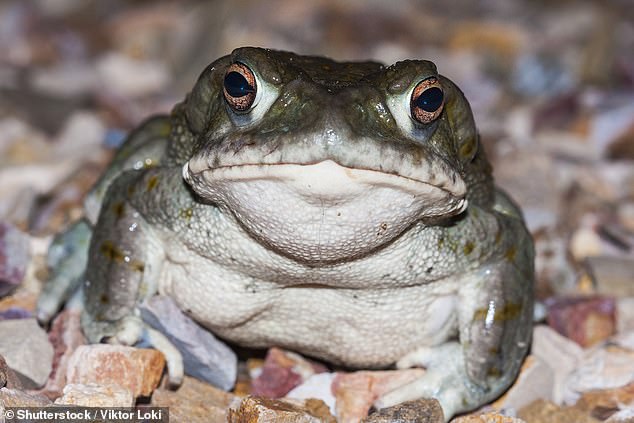
While some celebrities, like Mike Tyson, have claimed the Colorado River Toad’s hallucinogenic secretions have brought them to the afterlife and back, the Toad’s ooze has proven to be an actual killer for the unfortunate pets who have gotten in its way
Colorado River Toad (Incilius alvarius)
Sometimes called the Sonoran desert toad, the Colorado River Toad has become infamous in recent years for its psychedelics secretions, including 5-methoxy-dimethyl-tryptamine, sometimes called the ‘God molecule.’
While some celebrities, like Mike Tyson, have claimed these hallucinogens have brought them to the afterlife and back, the Toad’s ooze has proven to be an actual killer for the unfortunate pets who have gotten in its way.
‘This deadly, slow-moving amphibian makes an easy catch for a playful pup,’ according to the Adobe Veterinary Center in Tuscon.
‘More dogs die from these things than rattlesnakes,’ Amy Burnette with Arizona Game and Fish told NBC affiliate KING-TV.
‘So, it’s definitely something you want to keep an eye on.’
Burnette’s advice to dog owners in the desert southwest is to be ready to aggressively flush-out their dog’s mouth if it attempts to eat the psychedelic toad.
‘Take a garden hose and you take it from the corner of [your dog’s] mouth and you flush it out towards the front of the mouth,’ she said
‘Just keep on flushing those toxins out […] you want to get all of that poison out and you want to get your dog to the emergency vet as soon as possible.’
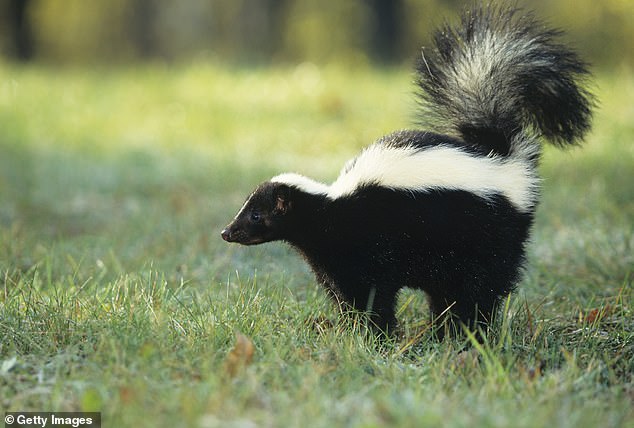
Forget about their smell, skunks are as deadly a vector for rabies as animals like raccoons and stray dogs, which are more commonly associated with the disease
Striped Skunk (Mephitis mephitis)
Forget about their smell – skunks can be as deadly a vector for rabies as animals like raccoons and stray dogs, which are more commonly associated with the disease.
While bats remain the most prevalent known rabies-carriers in the US, making up 33 percent of all animal cases, according to the US Centers for Disease Control and Prevention (CDC), the unassuming skunk ranks high at number 3
Skunks make up 20.3 percent of all recorded rabies cases in animals, behind raccoons (30.3 percent) and bats.
In August, three rabid skunks led health officials in Macomb County, Michigan to euthanize several pets who battled with the rabid skunks in their area.
‘Given the proximity of the subject skunks, residents are strongly encouraged to take caution for themselves and their pets when they see a skunk due to the possibility of localized transmission,’ the county health officials said.
The CDC and other agencies note abnormal drooling, aggressive behavior and ‘biting at imaginary objects’ are all possible signs that a skunk, or any other animal, might be infected with rabies.
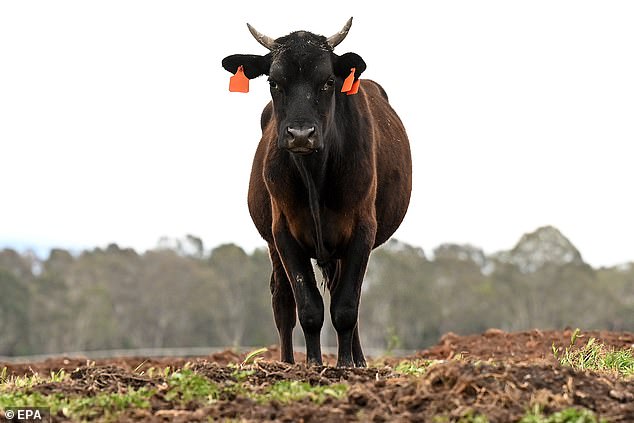
Humans may kill and eat them in record-numbers, but cows have proven adept at answering in kind. Every year, approximately 22 people are killed by a cow, according to data collected between 2003 and 2007 by the CDC
Cows
Humans may kill and eat them in record-numbers, but cows have proven adept at answering in kind.
Every year, approximately 22 people are killed by a cow, according to data collected between 2003 and 2007 by the CDC.
The typical cause of death, according to research by both the CDC and the livestock charity Heifer International, is kicking or trampling — but the majority of those human lives are only lost when the cow’s hooves smash into the head or chest.
Dr. Joseph Forrester of the Medical College of Wisconsin crunched the numbers on the CDC’s animal-caused death data for the journal Wilderness & Environmental Medicine in 2012.
It proved to be a daunting task as 655 deaths within the CDC’s records were all packed into a generic category dubbed ‘other mammals.’
‘We looked at previous papers regarding this category and it seems like the largest are most likely cows and horses,’ Forrester told Outside magazine.
‘Unfortunately, we do not know the exact percentages, but the livestock majority seems to fit with which areas of the country have the most farms and farm workers.’
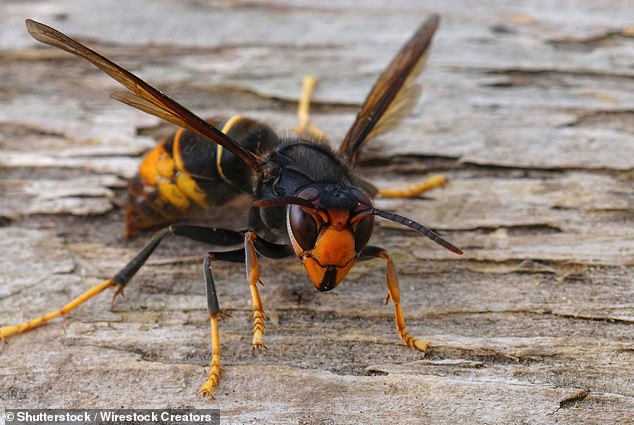
According to a CDC data analysis by Dr Joseph Forrester of the Medical College of Wisconsin, bees, hornets and wasps kill about 79 people each year, mostly men (80.9 percent) and mostly adults over the age of 35 (93.1 percent).
Bees, Hornets and Wasps
According to Dr. Forrester’s CDC data analysis, bees, hornets and wasps kill about 79 people each year, mostly men (80.9 percent) and mostly adults over the age of 35 (93.1 percent).
Although many people know to be wary of these insects, particularly those with an allergy to the creatures’ stings, the federal agency has warned the public that these figures are likely an underestimate.
Without an allergic reaction, it would take as many as 500 stings to kill a child and over 1,100 stings to kill the average adult, the agency reports, although some Africanized honey bees do attack in swarms of that staggering size.
In 2019, even as sting-based fatalities were on the rise over the five previous years, the CDC warned their numbers likely underreported the problem because doctors were misdiagnosing the allergic reactions as heart attacks or sunstrokes.
A total of 1,109 people died from stings by bees, hornets and wasps from 2000 to 2017, according to the CDC, despite those underestimates.
‘Deaths ranged from a low of 43 in 2001 to a high of 89 in 2017,’ the federal health agency said in its 2019 report.
The best way to protect yourself, according to the Mayo Clinic, is to get tested for allergies and take your shots.
‘People who have a severe allergic reaction to a bee sting have a 30 to 60 percent chance of anaphylaxis the next time they’re stung,’ according to the Mayo Clinic’s bee sting site.
‘Talk to your doctor or an allergy specialist about prevention measures such as immunotherapy (‘allergy shots’),’ the group advises, ‘to avoid a similar reaction in case you get stung again.’
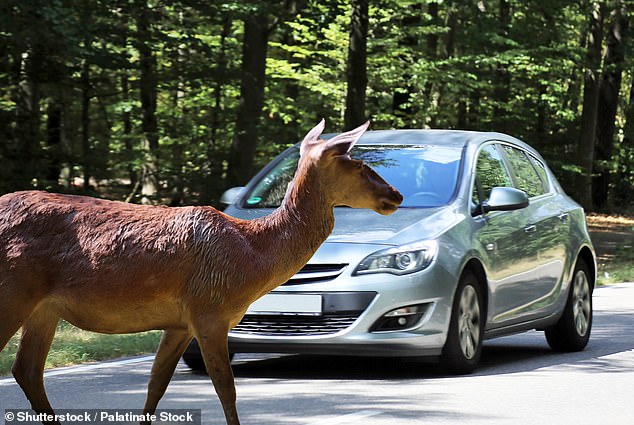
Deer kill people more than any other animal in the United States, year after year. Out of the over 700 deaths attributed to animals, annually, it is estimated about 440 deaths — nearly two thirds — are caused by collisions between deer and motor vehicles
White-Tailed Deer
Deer kill people more than any other animal in the United States, year after year.
The peaceful-seeming, graceful herbivores are responsible for more human fatalities than practically every other animal predator combined.
Zoologist Michael Conover, a professor of wildland resources at Utah State University, has conducted one of the most comprehensive recent studies of human deaths cause by animals within the United States.
Out of the over 700 deaths attributed to animals, annually, Conover estimates about 440 deaths — nearly two thirds — are cause by collisions between deer and motor vehicles.
The fluffy-tailed creatures kill more people each year than bears, wolves, coyotes, cougars, snakes, sharks and alligators combined.
November mating season is the riskiest period for both motorists and deer, according to Marianne Gauldin of Alabama state’s Wildlife and Freshwater Fisheries Division, because the deer literally become reckless with lust.
‘They are hyper-focused on the opportunity to breed, and they therefore lose some of their wits,’ Gauldin told the Washington Post. ‘They are full-tilt looking for does, chasing does and running after does for the opportunity to breed.
‘And they are doing this with tunnel vision […] literally running across the road.’












